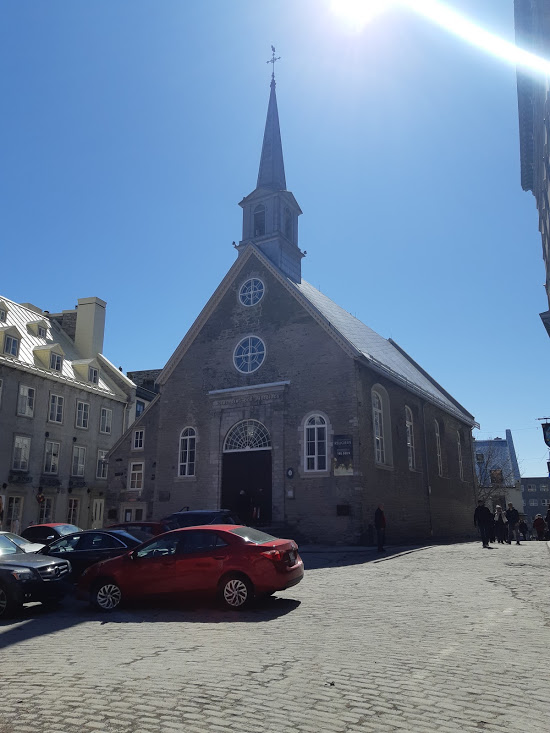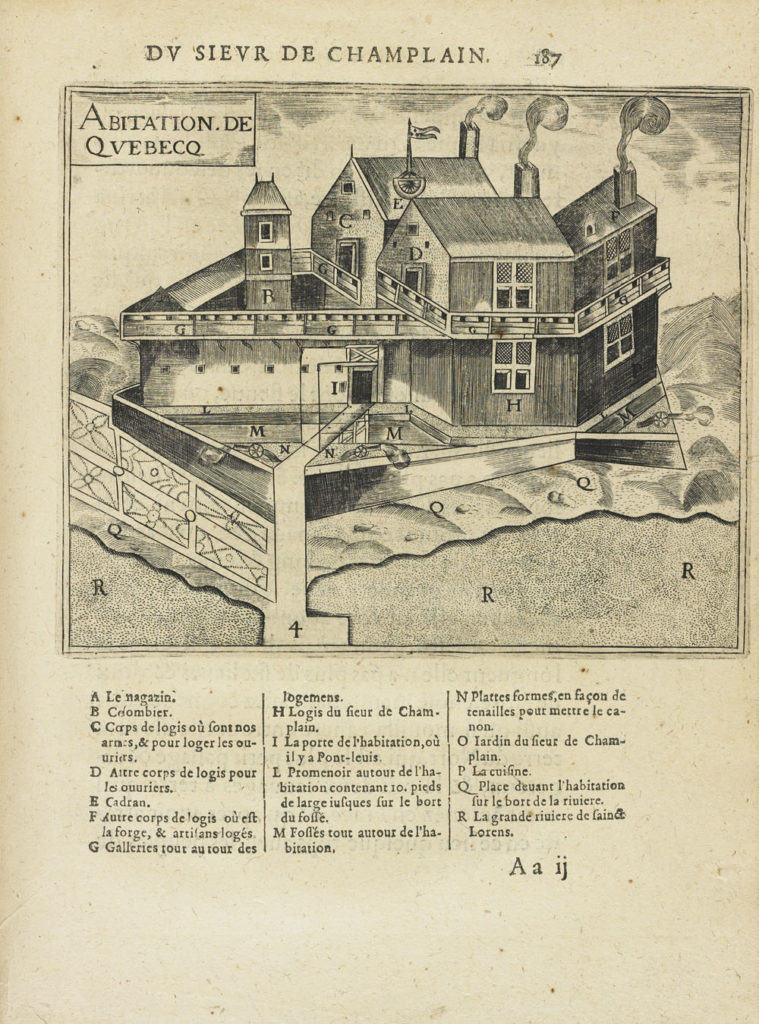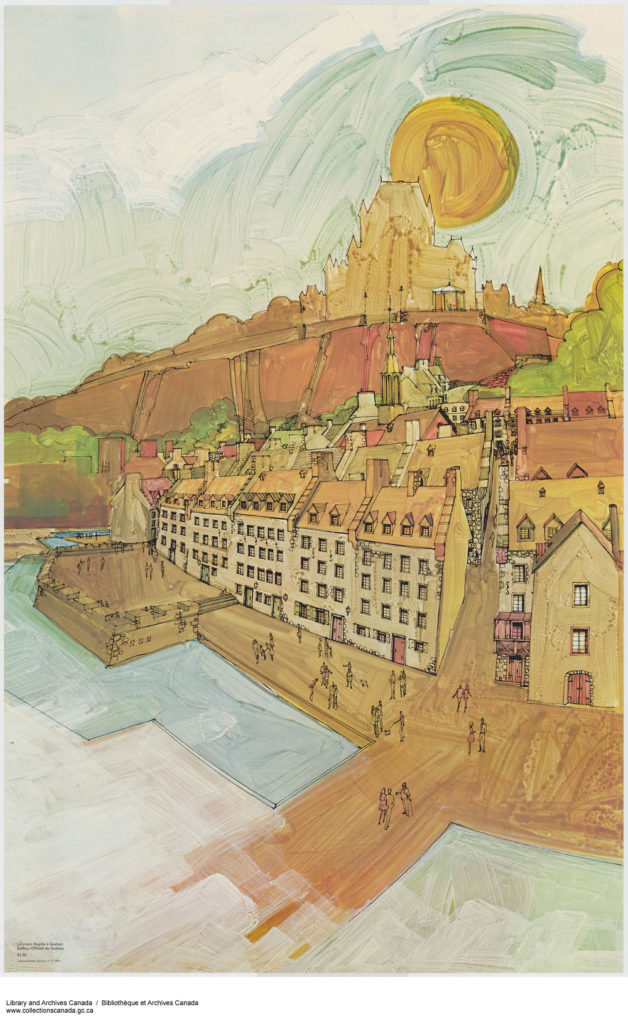
Québec City is known for its beautiful old buildings and a feel of old European style buildings in North America. The buildings have been restored and maintained for several hundreds of years and it is impossible to tell what is actually older than the 1900s or what has been restored. Québec City, and Québec itself, has a strict cultural policy and maintaining its heritage buildings is incredibly important. Old Québec has been through a lot: fires, the English siege and the occupation of the English. The landscape and buildings have changed, but even if they are new buildings, the ghosts that are said to haunt the area have not. There is one place in particular that is considered very haunted: Place Royale and the surrounding area of Lower Québec.
In the early 1600s Samuel de Champlain began construction of the first habitation of Québec. It was built near the Saint Lawrence River to become an important trading post for the Kingdom of France. The habitation had buildings surrounded by a moat to keep it safe. It was during the building of this first habitation that an assassination attempt on Champlain was made and an act of treason against the French monarchy was planned.

The secondary locksmith of Québec, Jean Duval, along with four other men from the settlement, planned to kill Champlain and offer the Québec post to the Basques and Spaniards. Champlain was warned by a sailor and he invited the five men to his ship. They were all arrested and thrown in jail. Duval, being the leader, was punished immediately. He was hung and then beheaded. His head was put on a spike in the middle of the habitation so everyone around it, or living above, would see it. It was left as a warning to not go against Champlain and the King of France.
In the 1630s to the 1640s the site around the habitation grew and the moat was filled in. The growth included a town square called Place du Marché, later to be known as Place Royale. In 1682 a major fire destroyed most of what is considered Old, Lower Québec. It was after that time that new fire regulations were implemented in hopes to sedate any future fires. Buildings were rebuilt, but this time with stone rather than wood.

In 1686 Intendent Jean Bochart de Champigny thought that Place du Marché was the perfect place for a royal square. A place dedicated to King Louis XIV, the Sun King, like one that would be found in France during the time. Champigny had a bust of the King erected in the middle of Place du Marché, hoping it would become the Place Royale of New France. In the end it did, but just not at that time. The bust of King Louis XIV was removed as it was causing a disruption in the traffic. It was erected once more in the 1930s when France gifted a new bust of King Louis XIV to Québec City.
Place du Marché was still considered a prime spot for a Place Royale. It was the square where everything and everyone was. Merchants were there, booths set up, decrees were posted by the King’s Storehouse and even executions were held in this little square. For Monseignor François de Laval thought it was perfect and wanted to build a church. In 1688 the church was finally built under the eye of Monseignor de Saint Vallier, it is called Notre Dame des Victoires. After this it was finally considered a Place Royale.

Many buildings were destroyed during the English siege of Québec City in 1759 and many buildings have a noticeably British influence in architecture. Some of the buildings still hold a French taste to them. Even if the architecture is newer, the haunted feeling still surrounds the area of Lower Québec. It is in Place Royale and around Notre Dame des Victoires where people feel the most haunted. They feel as if the people who were executed there still watch them during the night. Even if the architecture has been renovated and restored, or is completely different from the 1600s, the ghosts who wander the square have not changed. Many believe Duval is one of these spirits lingering in Old Québec. With a city as old as Québec it’s not a wonder that something from the past has held on.
Bibliography
Cadeau, Carman. “How to Not Kill Samuel de Champlain.” All About Canadian History (May 23, 2017). Accessed April 9, 2019. cdnhistorybits.wordpress.com/2017/05/23/failed-assassination-of-samuel-de-champlain/
CBC “The Plot Against Champlain.” Le Canada: A People’s History/Une Histoire Populaire (2001). Accessed April 9, 2019. www.cbc.ca/history/EPCONTENTSE1EP2CH4PA5LE.html
Couvrette, Sébastien. “Place-Royale: Where Quebec City Began.” Encyclopedia of French Cultural Heritage in North America: Québec from Past to Present (2007). Accessed April 9, 2019. www.ameriquefrancaise.org/en/article-653/Place-Royale:_Where_Quebec_City_Began.html
Grignon, Marc. “Place Royale.” The Canadian Encyclopedia (February 7, 2006). Edited March 4, 2015. Accessed April 9, 2019. www.thecanadianencyclopedia.ca/en/article/place-royale
“Habitation de Québec.” Wikipedia. Accessed April 9, 2019. en.wikipedia.org/wiki/Habitation_de_Québec
Heritage Québec. “Place-Royale: Birthplace of French America.” Ville de Québec: l’accent d’Amérique (2019). Accessed April 9, 2019. www.ville.quebec.qu.ca/en/citoyens/patrimoine/quartiers/vieux_quebec/interet/place_royale.aspx
Marsh, James H. “Samuel de Champlain and the Founding of Quebec.” The Canadian Encyclopedia (July 2, 2013). Edited March 4, 2015. Accessed April 9, 2019. www.thecanadianencyclopedia.ca/en/article/champlain-and-the-founding-of-quebec-feature
Sutherland, Joel A. “The Hangman’s Knot.” In Haunted Canada 4: More True Tales of Terror, 101-104. Toronto, Ontario: Scholastic Canada Ltd, 2014. Amazon Kindle ebook version.
Trudel, Marcel. “Duval, Jean.” In Dictionary of Canadian Biography Volume 1, 1966. Revised in 1979. University of Toronto/Université Laval. Accessed April 9, 2019. www.biographi.ca/en/bio/duval_jean_1E.html